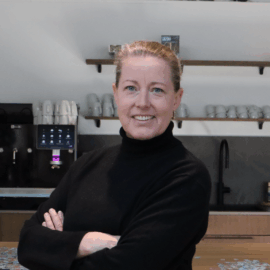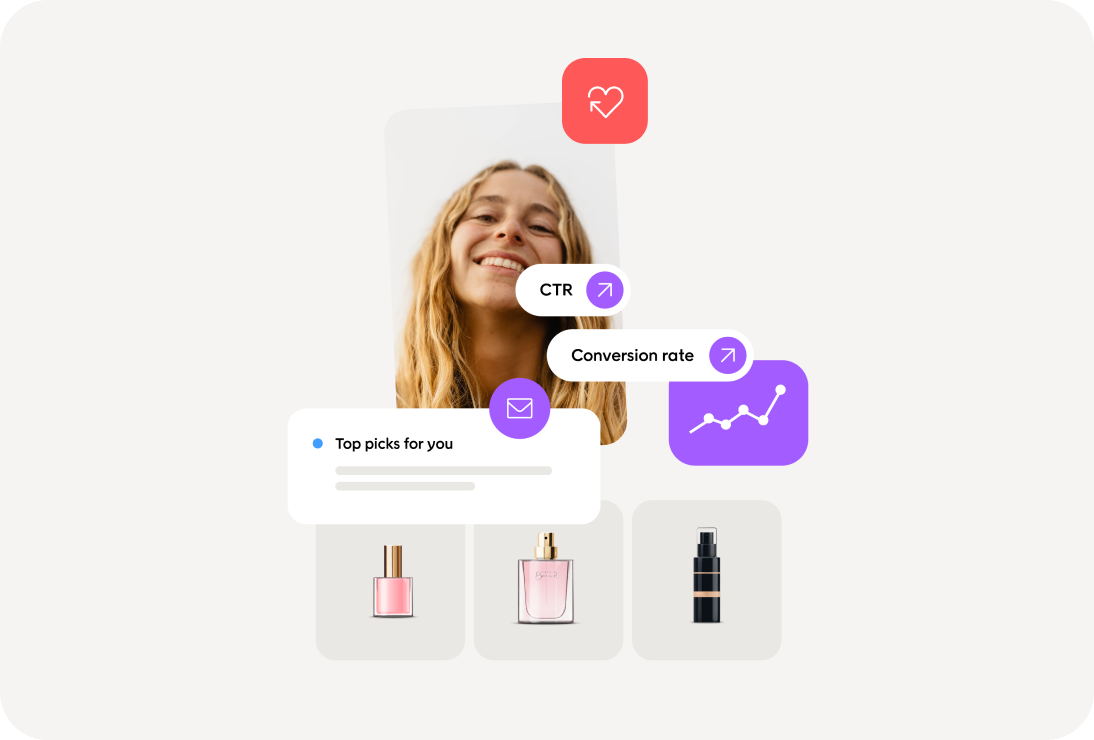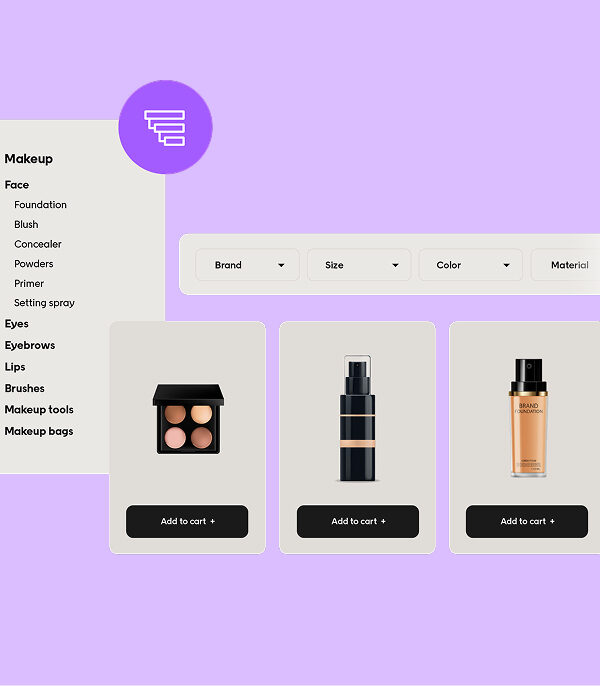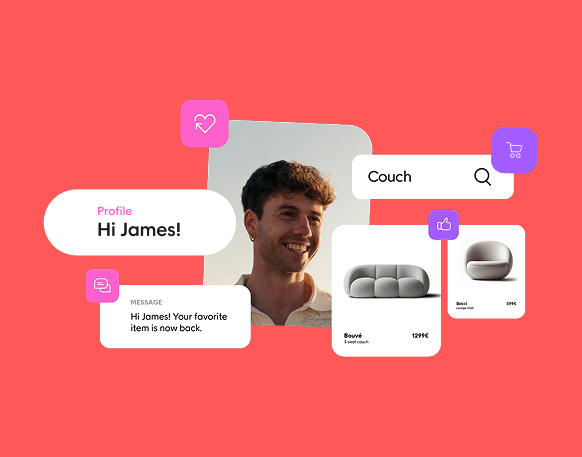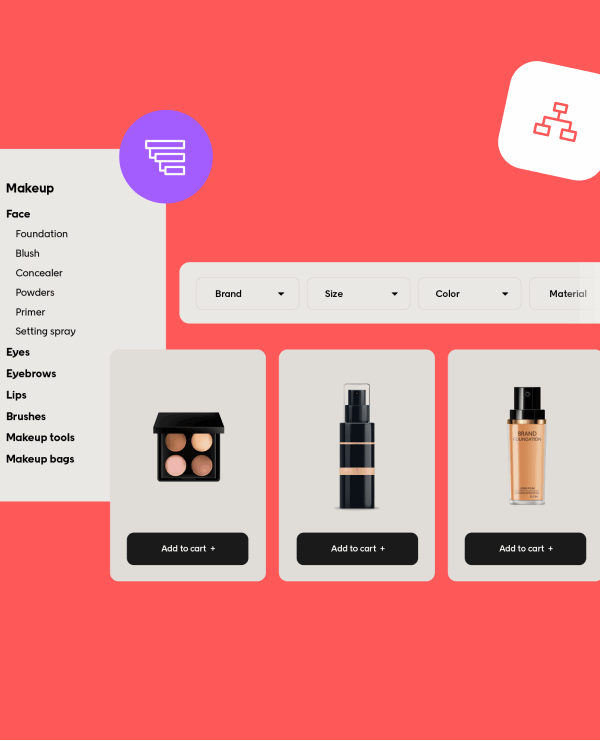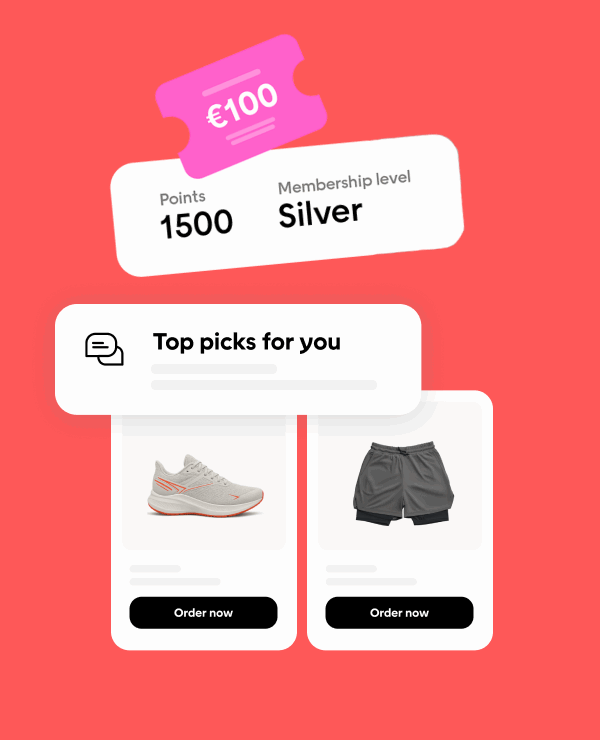Want to boost sales, earn loyal customers, and make your website work harder? Start with onsite personalization.
Today’s shoppers expect tailored experiences tailored to their behavior, interests, and past purchases. McKinsey found that 71% of consumers expect companies to deliver personalized interactions.
That’s why personalization isn’t just about names or discounts. It’s about delivering real-time, individualized experiences that feel relevant and valuable on every visit.
Short on time? Here are the main takeaways:
TL;DR
- Personalization works best when it’s powered by clean, individual-level first-party data
- Tailoring messages based on referral source can boost click-through rates and conversions
- Timely, audience-specific reminders keep loyal customers engaged and ready to buy
- Pop-ups and dynamic content make it easy to deliver personalized messaging without redesigning your site
- Most brands focus too much on acquisition, but retention through personalized experiences is what drives long-term growth
1. Collect quality data
You can’t personalize without data. It’s like trying to fly a kite without wind. It’s not going anywhere.
To create meaningful onsite experiences, you need a thorough understanding of who your site visitors are, what they do, and what they care about. That starts with high-quality, first-party data. Here’s how to lay the groundwork for better website personalization:
Start with a quick conversion analysis
Before personalizing anything, walk through the full customer journey yourself, from the first click to the final purchase. Use this time to spot where your site could be clearer or more helpful.
Ask yourself:
- Is each page easy to understand?
- Are there any moments of hesitation or confusion?
- Do any elements distract from the main goal?
- Would a personalized message or offer help reduce friction?
These are the pain points where personalized content can create real value.
Collect individual-level data
Web analytics tools like Google Analytics are useful, but they don’t go far enough. They track groups, not people.
To deliver a more personalized experience, you need tools that gather individual-level data. This lets you recognize returning visitors, understand past purchases, and tailor personalized product recommendations in real-time.
Platforms that support real-time behavior tracking and CRM syncing make this possible. With Voyado, you can track specific behaviors and sync that information directly into your customer profiles for tailored onsite personalization.
That means you can target website visitors based on what they actually do, not just which group they belong to.
Don’t underestimate the welcome email
Email plays a powerful role in your overall personalization strategy, especially when you combine it with first-party data from your website.
According to Invesp, only 57.7% of brands send welcome emails as part of their email marketing strategy. For the companies not investing, this is a huge missed opportunity.
Here’s why:
- Welcome emails have an 87% higher open rate than regular newsletters
- Read rates jump by 47% compared to standard emails
- When personalized, response rates can increase by 5 to 10% instantly
This email is your chance to set the tone for future engagement and keep your messages out of the promotions tab.
Want to improve your website personalization? Start by aligning your email messaging with what you know about your site visitors. The more connected the experience, the more likely you are to turn new customers into loyal customers.
Sync your data across tools
Data sitting in silos won’t help you create individualized experiences. Make sure your onsite activity is synced with your email platform, loyalty program, and customer profiles.
When you connect your tools, you gain the ability to show relevant onsite personalization to:
- A new visitor signing up with a business email
- A loyal customer returning for their third purchase
- A discount-seeker who abandoned their cart last week
These small touches make the customer experience feel seamless and relevant from start to finish.
Next up, let’s look at how to personalize your site content based on where each visitor came from.
2. Tailor your message to the source
Not every visitor comes to your site for the same reason. Some clicked through an Instagram ad. Others found you via Google. A few are returning visitors who already trust your brand.
That’s why your onsite personalization should start with referral-based messaging.
Matching your personalized messaging to the visitor’s source can increase click-through rates by up to 484% and drive a 510% boost in conversions. It’s a simple tactic with a big payoff.
Instead of using a generic CTA like:
“Sign up for our newsletter and get 10% off your first purchase.”
You can personalize the message by source:
- Instagram visitor: “Instagram fans get 10% off their first purchase.”
- Retargeted user: “Welcome back! You can still claim 10% off your first order.”
- Newsletter referral: “Thanks for clicking through! Your 10% discount is ready.”
Each version delivers a more personalized experience without requiring complex tools. You’re simply aligning the message with the visitor’s context.
Bonus: Make influencer campaigns personal
Influencer traffic is often wasted because brands drop visitors onto generic landing pages. Imagine clicking a link for a dress someone promoted, only to land on a crowded category page with no sign of the product or discount.
That’s a missed opportunity.
Instead, welcome these online visitors with a clear, customized message.
For example:
“Hi! You came from @stylebyjen. Use code JEN20 at checkout for 20% off. The dress she wore is right below.”
This kind of personalized content reinforces the trust built by the influencer and makes it easier for visitors to find what they came for.
If you’re using a platform like Voyado, you can identify these visitors and display the right message based on campaign links, discount codes, or loyalty program status.
But, how can you go deeper with audience-specific messages and reminders that keep your most valuable customers coming back?
3. Audience-specific messages and reminders
Your site shouldn’t treat a first-time visitor the same way it treats a VIP customer. That’s where audience-specific personalization makes a real difference.
While many brands focus on acquiring new customers, long-term success depends on retention. Loyal customers are more likely to engage, make repeat purchases, and stay connected, especially when you demonstrate a genuine understanding of who they are.
Recognize returning visitors
When someone returns to your site, don’t restart the customer journey from zero. Instead, use personalized messaging to acknowledge their history and guide them forward.
For example:
- Remind them of items they added to their cart
- Surface personalized product recommendations based on past purchases
- Highlight rewards or events in your loyalty program
- Display unused discount codes in a pop-up
These reminders make the entire experience feel smoother and more valuable.
Pop-ups that actually help
Pop-ups often get a bad rap, but when personalized, they become powerful tools for improving the consumer experience.
A well-timed modal can:
- Show a discount for returning visitors
- Share early access to a sale for gold-tier members
- Nudge a new customer to sign up for updates with their business email
The key is relevance. With synced data, you can trigger messages in real time based on behavior, preferences, and status.
These simple touches keep users engaged and coming back.
Real-world example: How NELLY personalizes at scale with Voyado
Personalization doesn’t have to be complicated. But without the right setup, it can become a bottleneck.
That’s precisely what NELLY, a leading Nordic fashion brand, was facing. Their team relied on three separate systems to manage customer data, messaging, and product recommendations.
The result? Slower campaigns, integration issues, and limited ability to create meaningful onsite experiences.
As their customer base grew, so did the pressure.
By implementing Voyado Engage alongside Elevate, NELLY streamlined its entire customer experience.
The switch allowed them to:
- Consolidate their tech stack into one platform
- Use real-time behavior to trigger personalized messaging
- Improve audience segmentation with first-party data
- Launch abandoned cart and browse campaigns with zero delay
- Create individualized journeys across email and website touchpoints
“Implementing Voyado has simplified the process for NELLY to create even more relevant customer journeys.” – Therese Leike Kärvestedt, Product Owner CRM at Omniarch/NELLY
With personalized product recommendations and behavior-driven campaigns now at the core of their strategy, NELLY delivers content that aligns with each shopper’s intent and preferences.
Their new setup not only drives higher engagement but also frees up their team to focus on long-term growth. This kind of data-driven personalization is what turns one-time buyers into loyal customers.
Now that you’ve seen what’s possible, it’s clear that onsite personalization isn’t just a trend. Whether you’re starting small or scaling fast, the right tactics can turn your website into a high-converting, customer-first experience.
Build loyalty with every visit
The best personalization strategies don’t try to do everything. They focus on the moments that matter most. From when a visitor first lands on your site, when a loyal customer returns, or when a timely reminder nudges someone to complete a purchase.
With the right data, tools, and messaging, you can:
- Meet rising consumer expectations
- Improve user engagement
- Personalize the entire experience across your site
Start by collecting high-quality first-party data, match your messaging to each visitor’s intent, and use simple tools like pop-ups or personalized content blocks to make every interaction count.
You don’t need complex code or a complete redesign. You just need to start.
Want to deliver more personalized experiences like NELLY without the tech headaches? Book a demo to see Voyado in action.
FAQs
What is onsite personalization, and why does it matter in online shopping?
Onsite personalization refers to tailoring the website experience in real-time based on visitor behavior, preferences, and first-party data. For online visitors, this can mean seeing personalized product recommendations, custom pop-ups, or content based on past purchases.
It’s key to boosting user engagement, improving the customer journey, and increasing sales, especially as third-party cookies disappear.
How can I create personalized customer journeys without overwhelming my team?
Start small by using automation and first-party data to trigger simple, relevant experiences.
For example, show personalized messaging based on referral source or send reminders to returning visitors about abandoned carts.
Tools like Voyado make it easy to personalize the entire experience without needing a full site rebuild. The key is to match your personalization efforts with clear campaign goals.
What kind of data is most important for successful website personalization?
To create individualized experiences, you need accurate first-party data, like browsing behavior, site activity, and purchase history. This enables you to understand your audience, tailor personalized content, and deliver real value to both new and loyal customers.
Avoid relying on broad segments or generic demographics. Instead, focus on specific actions from site visitors and build from there.
How do pop-ups fit into a good site personalization strategy?
Pop-ups are one of the easiest ways to add customized, in-the-moment personalized messaging.
When triggered based on user behavior, they help reduce pain points, boost conversions, and highlight resources or offers.
You can display pop-ups to encourage newsletter signups with a business email, surface discounts for returning visitors, or highlight specific events for an interested audience.
Can I personalize landing pages and other pages on my website?
Yes. Personalization isn’t limited to the homepage. You can personalize landing pages, product listings, and other pages, such as your cart or thank-you screens.
By using real-time data, you can create relevant, high-converting onsite experiences that match visitor expectations. The goal is to deliver the same level of relevance and clarity across the entire experience.
